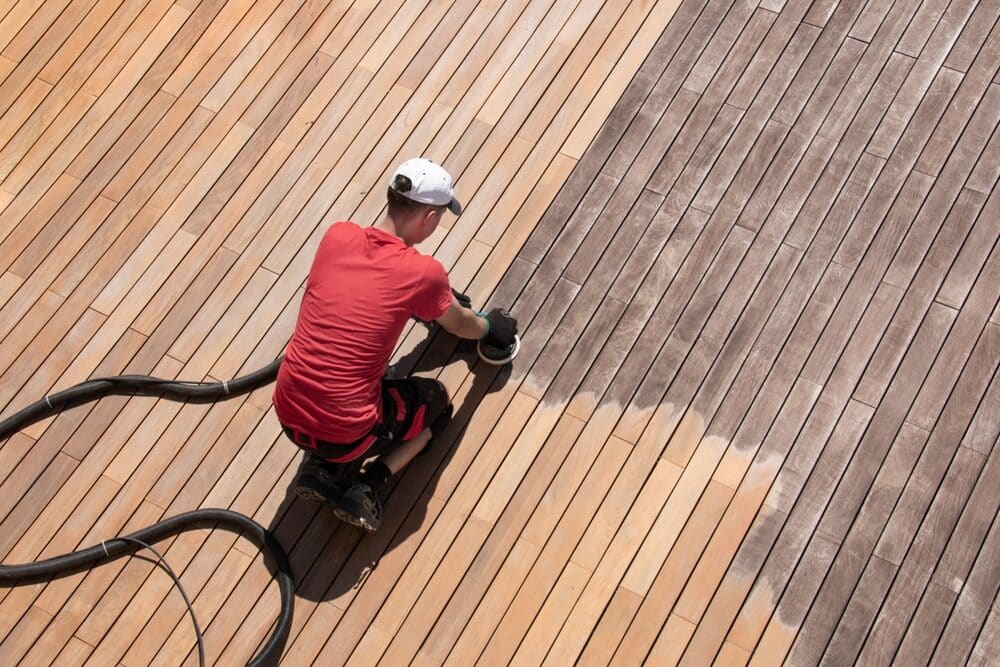Deck Sanding
Introduction
Deck sanding is a crucial step in maintaining the beauty and longevity of your deck. Over time, exposure to the elements can cause the wood to become rough, splintered, and discolored. Sanding your deck smooths out imperfections, removes old stains or finishes, and prepares the surface for a fresh coat of stain or sealant. Whether you’re preparing to refinish your deck or just want to restore its original charm, sanding is an essential process that can make a significant difference in the look and feel of your outdoor space.
Why Sand Your Deck?
Sanding your deck is more than just a cosmetic upgrade. It plays a vital role in preserving the wood and extending the life of your deck. Benefits:
- Removes Surface Imperfections: Over time, your deck may develop splinters, rough patches, and other imperfections. Sanding smooths out these areas, making your deck safer and more comfortable to walk on.
- Prepares for Staining or Sealing: A properly sanded deck allows stain or sealant to penetrate the wood more effectively, ensuring a longer-lasting finish.
- Enhances Appearance: Sanding brings out the natural grain of the wood, giving your deck a refreshed, like-new appearance.

How to Sand Your Deck
While this can be a DIY project, it’s essential to do it correctly to avoid damaging the wood. Here’s a brief overview of the process:
- Clean the Deck: Before sanding, make sure the deck is thoroughly cleaned and dry. Remove any debris, dirt, and previous coatings.
- Choose the Right Sandpaper: Use coarse sandpaper (60-80 grit) for the initial sanding to remove old finishes and smooth out rough areas. Follow up with finer sandpaper (100-120 grit) to achieve a smooth surface.
- Sand with the Grain: Always sand in the direction of the wood grain to prevent scratches and ensure an even finish.
- Vacuum and Clean: After sanding, vacuum the deck to remove dust, and wipe it down with a damp cloth to prepare it for staining or sealing.
When to Sand Your Deck
The best time to sand your deck is during dry weather when the wood is completely dry. This allows for the most effective sanding and ensures the wood is ready for staining or sealing. Depending on your deck’s condition and the type of wood, you may need to sand your deck every 2-3 years.
Hiring a Professional
If you’re unsure about sanding your deck or simply don’t have the time, hiring a professional can ensure the job is done correctly. Professional services have the tools and expertise to bring your deck back to life, making it look better than ever.
Conclusion
Sanding is a key step in maintaining your deck’s appearance and durability. Whether you tackle it yourself or hire a professional, the results will speak for themselves, giving you a smoother, safer, and more attractive outdoor space.

